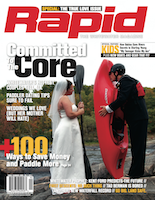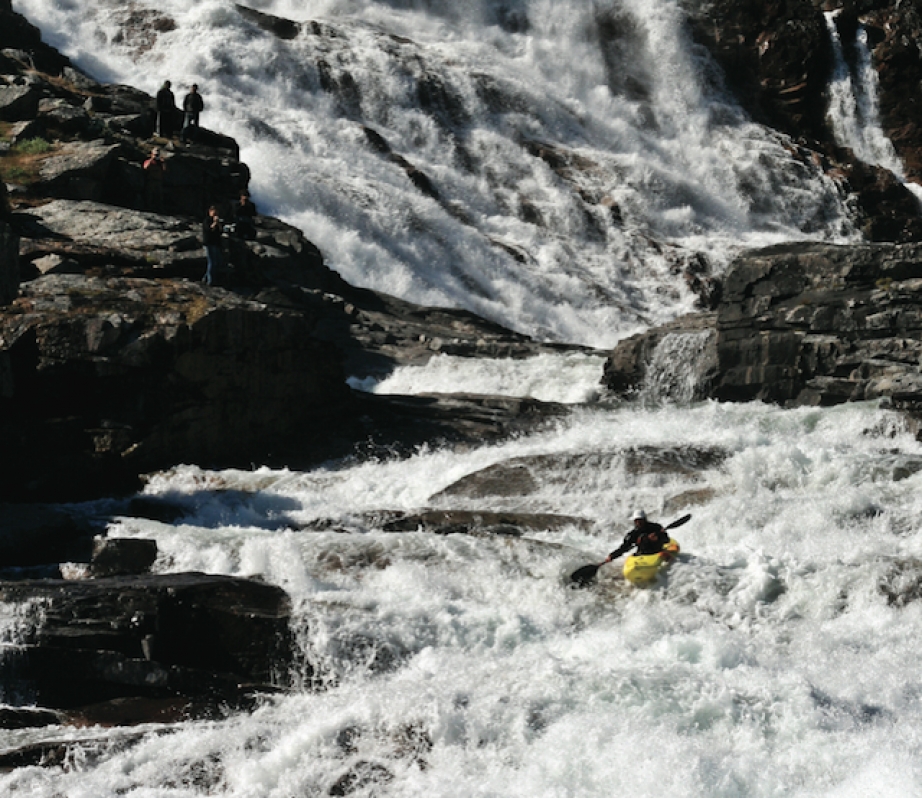Perched largely above the Arctic Circle between the 60th and 85th parallels, Greenland stores 10 per cent of the earth’s freshwater reserves in the form of a giant ice cap slowly melting into the sea. The island’s rivers flow straight off this ice cap, tumbling furiously down mountainsides and into barren valleys home only to caribou and the occasional stray polar bear.
Greenland is also the birthplace of kayaking
The first qajaqs were constructed of sealskin stretched over driftwood and bone 2,000 years ago. since then, generations of the native inuit people have paddled, hunted and fished along the island’s treacherous coastline using these seafaring crafts. One place they never ventured was inland to ply the rivers. They simply had no reason to.
In 2007, English adventurers Ali Marshall and Simon Tapley became the first paddlers to explore Greenland’s largely untracked interior in search of runnable whitewater. The two-man expedition was challenged by the difficulty of running adequate safety on the river, viscious weather and sketchy information and transportation.
“We’d gamble on valleys sometimes three days’ walk away to find all the gradient lost in big falls too high to paddle,” says Marshall.
The hit-or-miss nature of their six-week expedition only made the reward of good whitewater that much greater. After sailing down the island’s west coast with a great danish cod fisherman in a boat called Nardvhalen—and later being rescued by the same when a storm blew their tent and kit into the sea—the men launched a two-week assault on the rivers flowing into the Bjornesund Fiord.
“It was a true wilderness at least 100 kilometres from other people,” says Marshall. “It really summed up the reasons we came to Greenland: warm weather melting a seemingly infinite snow pack, smooth ancient granite and good gradient.”
The promise of more undiscovered whitewater lured Marshall and Tapley back to Greenland
In the summer of 2008, this time better prepared and with the addition of two more paddling friends, Mike Scutt and Graham Milton. The short, plastic creek boats they brought with them—evolved from the ancient qajaq design to perform in a different medium—were nearly unrecognizable to the locals.
“We stopped in Qaqortoq where a man hand crafted traditional Inuit kayaks,” Scutt recalls. A thriving local qajaq club let the visitors try their seaworthy speed machines but declined an offer to demo the team’s strangely-shaped, garishly-coloured boats. “They laughed at our plastic whitewater boats,” Continues Scutt.
The English paddlers described their experiences to the qajaq club. How they had spent two weeks crossing fiords, walking over land, hitching rides on tractors and quad bikes and being dropped off by speedboat at the mouth of a brown, silty river churning through an impassable canyon. They told the Inuit kayakers about the arduous trek up around the canyon into a tributary full of waterfalls, smooth slides and beautiful, blue snowmelt water. After showing the local paddlers footage of running a long, steep slide, milton told them that all the pain and struggle to get there was worth it for that moment of ecstasy he felt in the pool looking back at that monster.
The locals’ reaction? “I think part of our descriptions were lost in translation,” says Milton.

This article first appeared in the Early Summer 2009 issue of Rapid Magazine.




